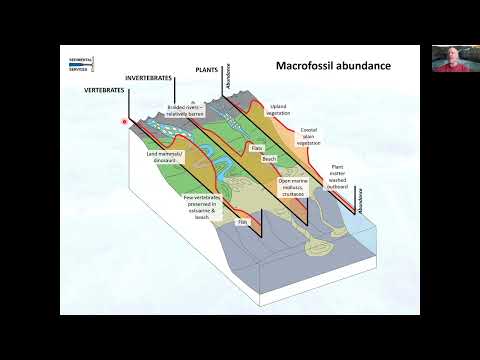Description:
Explore the intricate world of sedimentology and its crucial role in fossilization through this comprehensive lecture by Jon Noad from the University of Adelaide. Delve into the various factors that contribute to the concentration of fossil deposits, examining both accumulation processes and exposure mechanisms. Discover how fecundity, winnowing, deposition rates, and catastrophic events influence fossil preservation across different sedimentary environments, from fluvial to deep marine settings. Analyze case studies, including Dinosaur Provincial Park and North America, to understand the prevalence of exceptional fossil deposits. Investigate the impact of organism robustness, cementation, and weathering profiles on fossil preservation. Learn to recognize patterns in rock types and outcrops that yield the best fossil hunting opportunities, and gain insights into using fossils as sedimentation gauges. Examine specific environments such as fluvial, aeolian, lacustrine, estuarine, and marine settings, and their potential for fossilization. Understand the concept of taphonomy and its significance in paleontology. Conclude with an exploration of notable fossil beds and bone deposits, including the Snyder Quarry and Howe Quarry, to enhance your understanding of sedimentological processes in paleontology.
Read more

The Sedimentology of Palaeontology - How to Accumulate Highly Fossiliferous Deposits
Add to list
#Science
#Earth Science
#Sedimentology
#Paleontology
#Computer Science
#Machine Learning
#Pattern Recognition